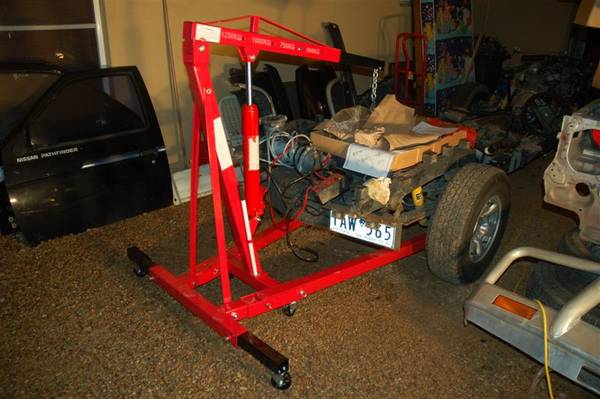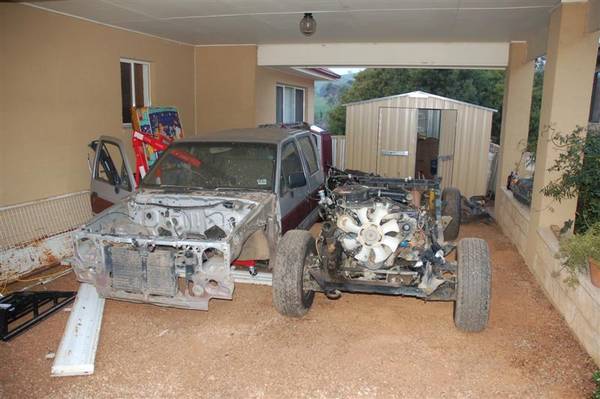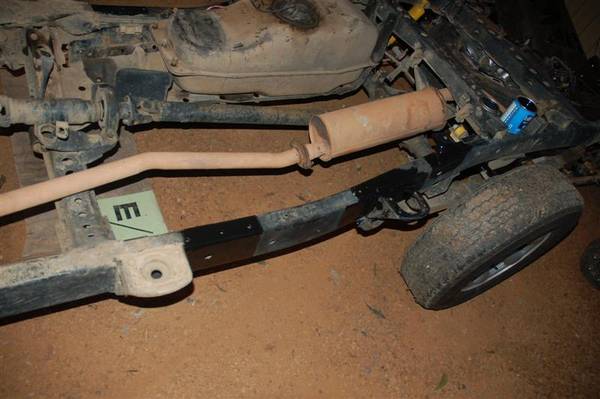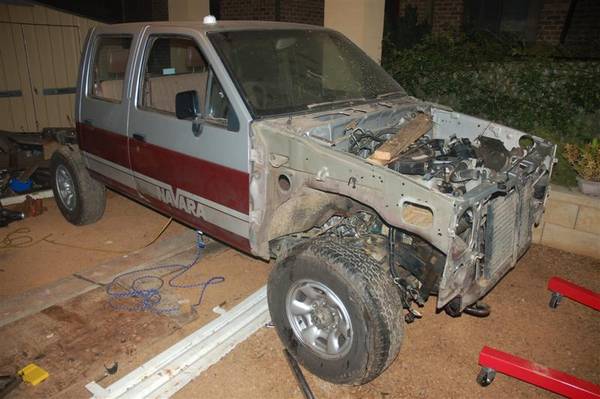You are using an out of date browser. It may not display this or other websites correctly.
You should upgrade or use an alternative browser.
You should upgrade or use an alternative browser.
D21 Build Log
- Thread starter Dion
- Start date

Help Support Nissan Navara Forum:
This site may earn a commission from merchant affiliate
links, including eBay, Amazon, and others.
I'm off to the welder 6am tomorrow morning. Because I had to wait for the engineer to come out before I could get it welded, it started to rust under the mounts I tacked on, so I decided instead to break them off, paint the bare metal and let the welder decide how much to take off.
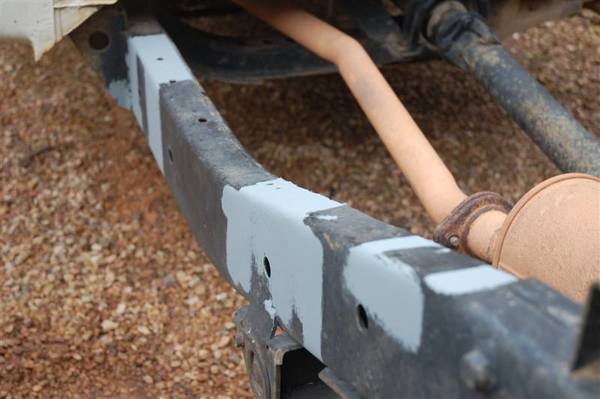
Both sides are done. I've also swapped to the dual cab tank. I had no problem getting fuel flowing again using the plunger on the filter, LOTS of plunges. The diesel fuel sender from the 80L fits into the 60L tank with some minor modifications. Put a small dog leg in the intake pipe to make it shorter, and use a nibbler to remove some metal from the slide so it will compress further.
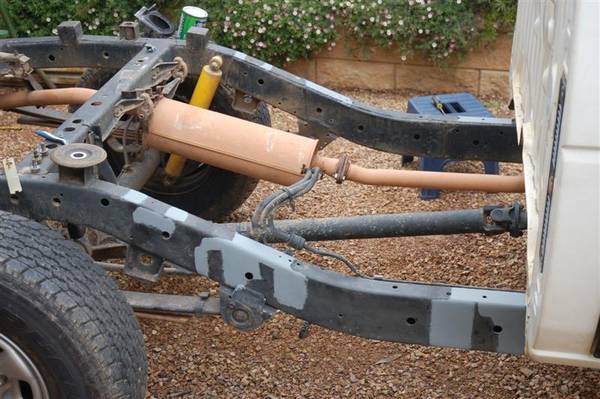
My nibbler broke while I was doing it, so I modified it and now I have a 1 tonne vice nibbler.

Both sides are done. I've also swapped to the dual cab tank. I had no problem getting fuel flowing again using the plunger on the filter, LOTS of plunges. The diesel fuel sender from the 80L fits into the 60L tank with some minor modifications. Put a small dog leg in the intake pipe to make it shorter, and use a nibbler to remove some metal from the slide so it will compress further.

My nibbler broke while I was doing it, so I modified it and now I have a 1 tonne vice nibbler.

$133.98
WJXMZDM 4pcs Window Visors Rain Guards for Nissan NAVARA D40 MK2-D40 2005-2011 2012 2013, Window Deflectors Window Rain Guards Vent Window Visors Car Accessories
yuanpingshixiangyouqianshangmaoyouxiangongsi

$132.98
WJXMZDM 4pcs Window Visors Rain Guards for Nissan NAVARA D22 MK1-D22 1997-2001 2002 2003, Window Deflectors Window Rain Guards Vent Window Visors Car Accessories
yuanpingshixiangyouqianshangmaoyouxiangongsi

$29.98
$45.00
Nissan Navara Pathfinder (86 - 96)
Classic Automotive Repair Shop & Restoration Manuals

$63.00
$67.00
Lift Ball Joint Fit forNissan NAVARA D40 2005-2014 / Navara NP300 D23 2015-2023 / Frontier 2005-2021
Great Automotive Technology Guangzhou Co., Ltd
Started at 11 today, if we'd started earlier we could have had it off, but ah well.
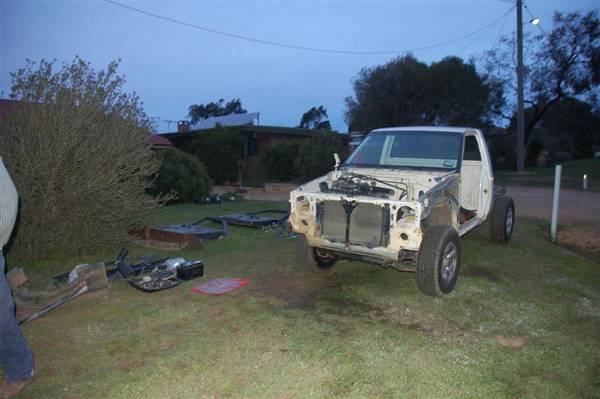
The heavens opened up and the sun went down so I guess that's it for today. Just have to sort out the handbrake and let off the body mount bolts, and off it comes.


The heavens opened up and the sun went down so I guess that's it for today. Just have to sort out the handbrake and let off the body mount bolts, and off it comes.

Tied the handwinch to the rear chassis crossmember, ran the cable over the roof then round the radiator support, used wood blocks to "trip" the cab as we winched, got it vertical, nose in the air, then rolled the cab off the chassis into the ditch. Dragged it to where it is below.
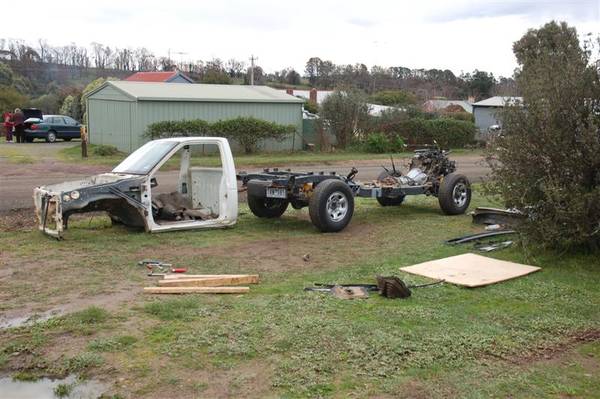
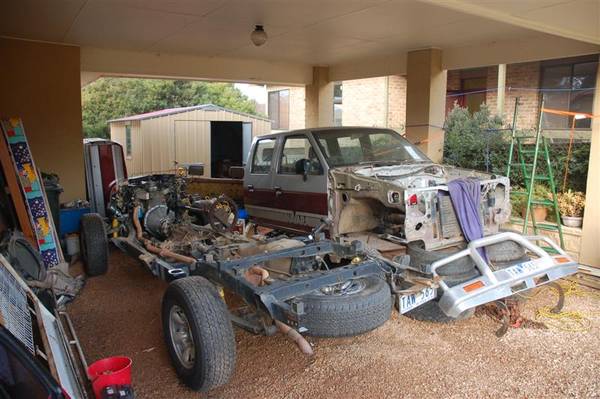


Finally I can declare, tomorrow's to-do list:
- Fit spacer blocks when they arrive
- Fit front seats
- Fit tray.
- Fill with coolant.
- Bleed brakes.
- Change oil and oil filter.
- Change fuel filter.
- Go hooning in a DUAL CAB
- List my Audi on eBay.
- Fit spacer blocks when they arrive
- Fit front seats
- Fit tray.
- Fill with coolant.
- Bleed brakes.
- Change oil and oil filter.
- Change fuel filter.
- Go hooning in a DUAL CAB

- List my Audi on eBay.

hey, considerind you swapped all the front panels on the single cab do you think i am right in asuming the arb winch bar that suits 92 on d21 will bolt up to an 88 d21? btw great job on the body swap! the more mates you can bring the merrier ay!
Welcome to the forums. You're not wrong about the mates, I was alone when I craned the dual onto the chassis and that sucked. 
I'm looking in my ARB catalogue, they have pictures of a D22 series 1 winch bar which would just about have to bolt up, and a WD21 pathfinder bar which would bolt straight up but leave you with a big gap to the grille. Got any pics of the bar you have in mind?
It's kinda hard to explain, but the grille for the '92-on fascia is actually lower than the grille for the '88 fascia by (rough guess!) 40mm or so. You can bolt it on no worries, but for it to look right with no gaps, you'll have to modify the bar mounts to lift it up to meet the grille. Whether that's tough or not depends on your resources and your willingness to mess with the engineered winch mount.
I'm actually tempted to call the newer look D21 a drop-nose fascia, it's so much lower.
Hope that helps mate, and again, welcome and stick around.

I'm looking in my ARB catalogue, they have pictures of a D22 series 1 winch bar which would just about have to bolt up, and a WD21 pathfinder bar which would bolt straight up but leave you with a big gap to the grille. Got any pics of the bar you have in mind?
It's kinda hard to explain, but the grille for the '92-on fascia is actually lower than the grille for the '88 fascia by (rough guess!) 40mm or so. You can bolt it on no worries, but for it to look right with no gaps, you'll have to modify the bar mounts to lift it up to meet the grille. Whether that's tough or not depends on your resources and your willingness to mess with the engineered winch mount.
I'm actually tempted to call the newer look D21 a drop-nose fascia, it's so much lower.
Hope that helps mate, and again, welcome and stick around.
Nothing exciting, just some planning.
I am considering a few different snorkel set-ups. I needed some figures to back up any decisions with regard to pressure drop, they are attached in the excel file.
This is the kind of information I wish was floating around on the interwebs so I'm posting it here.
My assumptions:
It's 25 degrees.
I'm driving at 80km/h.
Therefore, I'm assuming the "ram air effect" is a gauge pressure of 0.292kPa. This is calculated from a simplified Bernoulli's equation.
My revs are 4000rpm. That is where the power peak is in a TD27T, which I'm designing for, plus it's the redline. The swept volume is assumed to be 2.7L and the boost 7psi.
Thus, the flow rate through the snorkel is 0.15m^3/sec at the extreme.
The options are a standard A-pillar mounted snorkel with a cross sectional area equivalent to a 50mm nominal ID pipe, or a snorkel which passes through the bottom of the engine bay, along the bottom of the body, and runs up between the body and the tray on the passenger's side, with the throat pointing in the direction of travel just above the roofline, made from either 50mm or 75mm PE pipe.
For those too lazy to open the excel document, the pressure drop across the 50mm C-pillar snorkel is a huge 10kPa, for the standard A-pillar snorkel 6kPa and for the 75mm C-pillar, 1.8kPa.
I think those results stem from the effect of the incredible flow velocity on pipe friction. I'd say the TD27T unmodified can't suck that much air in reality.
I am considering a few different snorkel set-ups. I needed some figures to back up any decisions with regard to pressure drop, they are attached in the excel file.
This is the kind of information I wish was floating around on the interwebs so I'm posting it here.
My assumptions:
It's 25 degrees.
I'm driving at 80km/h.
Therefore, I'm assuming the "ram air effect" is a gauge pressure of 0.292kPa. This is calculated from a simplified Bernoulli's equation.
My revs are 4000rpm. That is where the power peak is in a TD27T, which I'm designing for, plus it's the redline. The swept volume is assumed to be 2.7L and the boost 7psi.
Thus, the flow rate through the snorkel is 0.15m^3/sec at the extreme.
The options are a standard A-pillar mounted snorkel with a cross sectional area equivalent to a 50mm nominal ID pipe, or a snorkel which passes through the bottom of the engine bay, along the bottom of the body, and runs up between the body and the tray on the passenger's side, with the throat pointing in the direction of travel just above the roofline, made from either 50mm or 75mm PE pipe.
For those too lazy to open the excel document, the pressure drop across the 50mm C-pillar snorkel is a huge 10kPa, for the standard A-pillar snorkel 6kPa and for the 75mm C-pillar, 1.8kPa.
I think those results stem from the effect of the incredible flow velocity on pipe friction. I'd say the TD27T unmodified can't suck that much air in reality.
Attachments
Thanks mate, I had a feeling that the grille may sit lower on the later model, you've cleared that up for me. From what i could gather talking to the bloke at arb (who wasn't all that helpfull) The bar looks like the one pictured on the wd21 but im assuming its not actually the same part due to different body mount heights on the nav and pathfinder??don't??know?? In the next week or two I'll find some time to go down and see them in person if i decide i might buy it to modify. I realy don't want to make one from scratch. i have been trying to find other manufacturers on the net that make a winch bar for my car but with no luck. do you know of any? i am going for the a pillar snorkel (cheap and easy) don't care much for air intake as it will always be slow. i just want to limit water intake i reckon the a pillar will be better for my needs. thanks again, matt
it doesn't look like it in the pics but did you put a body lift under the new cab? if not was there any major reason for it? thats one of the next things i was planning if its not going to be too much of a drama. are you having any issues with the larger rubber under the front guards? i'm assuming your puting that later model front end on but? have they got larger arches?
Last edited:
Similar threads
- Replies
- 12
- Views
- 831





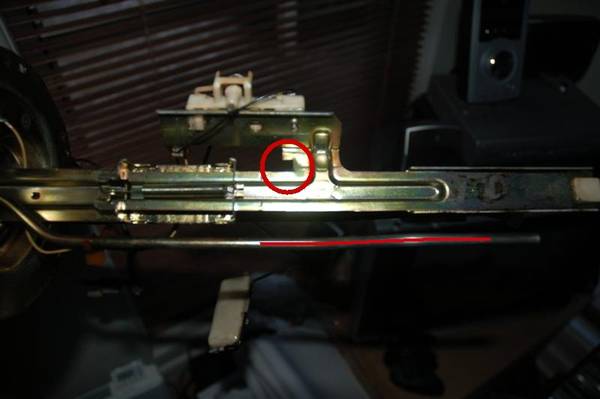
















![[Replacement] Car Hood Cowl Top Wiper Cowl Grille With Clip for Nissan for Hardbody for Navara D21 for Ute for Pickup 1986-1997 Accessories 66814-0S700 Soggier(1 Pair with 12clips)](https://m.media-amazon.com/images/I/41LVoPlvrpL._SL500_.jpg)

